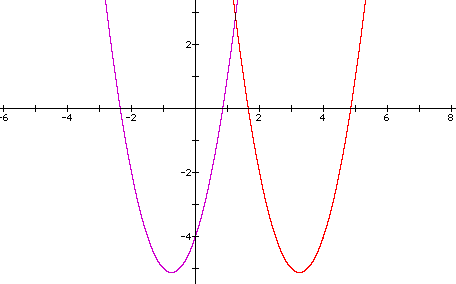


This is an example of a quadratic equation. This is also called a second-degree polynomial function. The graph is opening upward because the first term is positive. By completing the square we get this equation: y=2(x+3/2)^2-2. From this equation we find calculate the vertex to be (-3/2, -22/4).
i. What would happen if we replaced x by (x-4)?


As you can see from the picture, the vertex of the graph has changed. When you replace x by (x-4) completing the square will give you a different formula.
ii. Now I will attempt to change the formula in order to move the graph of y=2(x-4)^2 + 3(x-4) -4 into the second quadrant. I will do this by replacing all negative values with positive values.


As you can see this has moved the graph to the second quadrant because it will never cross the x or y- axis.
iii. Now I will construct a graph that is concave down and shares the same vertex as the blue graph in #2.


I did this construction first by changing the a-value to a negative 2 then by completing the square for the correct vertex.